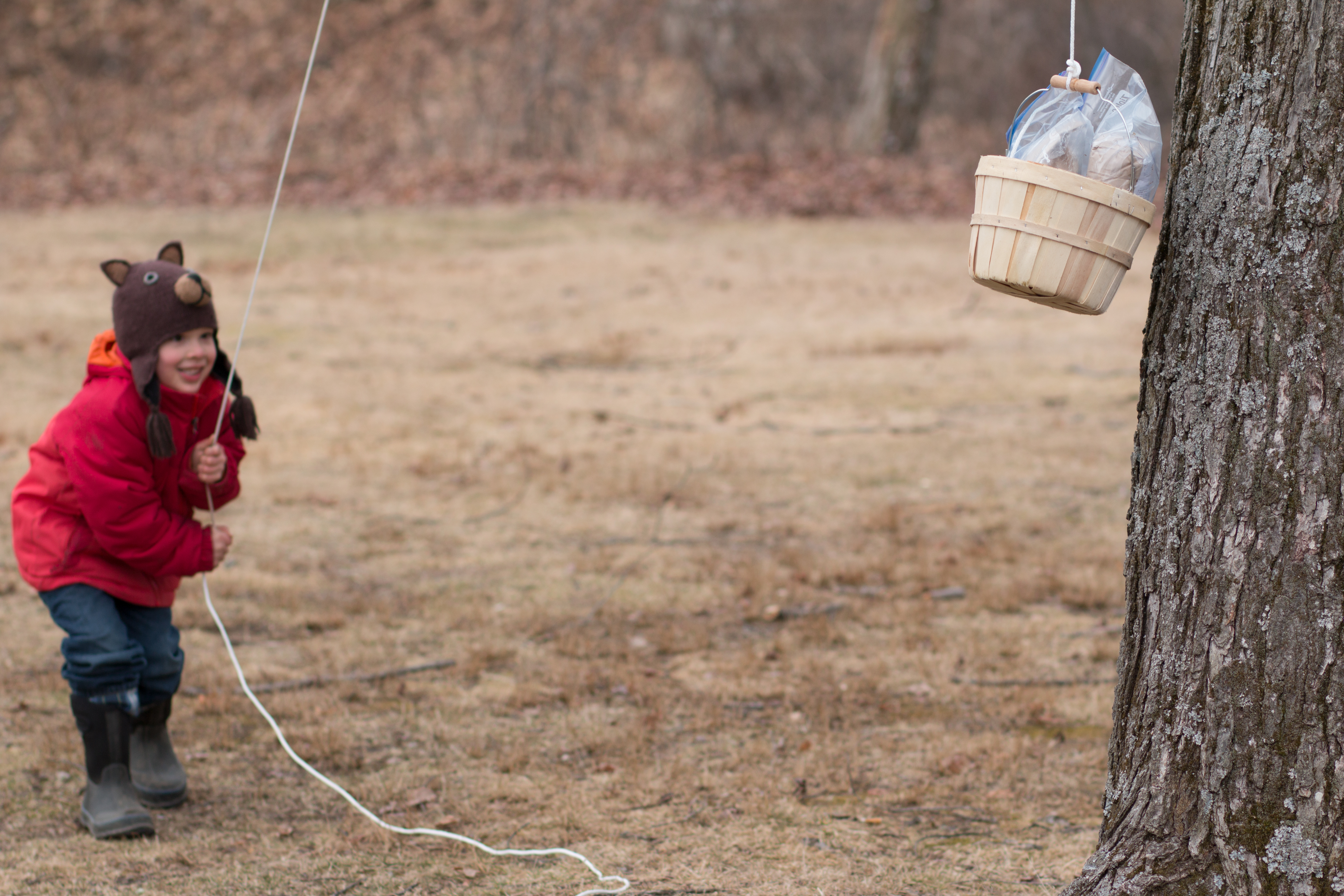There’s no skill more essential to our children’s future success than problem solving—and that’s true no matter how you define success. It’s so important that the World Economic Forum identified complex problem solving as the #1 skill people will need to thrive in the workforce of the future.

As an educator, I saw how helpful these skills were first hand. The children in my classrooms who believed they were equipped, and had a starting place from which to solve new problems, tackled all kinds of new learning challenges with greater ease and, in turn, success. According to research shared by Adobe, 97% of educators and 96% of policymakers agree that problem solving skills are important in order for students to learn in school — and the teacher in me also wholeheartedly agrees!
Life really never stops presenting problems to solve, and if you have the capacity to meet them and solve them, you can better adjust to a changing environment, navigate key relationships, and contribute to your family, local and broader communities. Our children will be inheriting a complicated and challenged world, and they’ll need to be capable scientific thinkers and problem solvers if they are going to thrive. This is one of the many reasons problem-solving is one of the 8 core skills we help kids develop in the Tinkergarten program, as well as the focus of our upcoming Winter class series.
But first, what exactly are these skills?
We think about problem solving as the ability to do all of the following: identify problems to solve; invent solutions to that problem; and arrive at one or more solutions that work. It is also our belief that strong problem solvers exhibit all three of these components with a playful spirit and with joy.
How do kids learn problem solving?
Even though the workforce seems far off for our young ones, we know that problem solving and scientific thinking starts early, and that humans are designed for it. As Alison Gopnik describes in Scientist in the Crib, babies have an “infinite capacity for wonder” and a drive to experiment in order to learn about their world. Wonder if wee ones can experiment? Hang out next to a high chair, it’s highly likely you ’ll witness experiments with gravity.
“It’s not that children are little scientists — it’s that scientists are big children. Scientists actually are the few people who as adults get to have this protected time when they can just explore, play, figure out what the world is like.” — Alison Gopnik

Early in life, children’s minds are flexible and hungry to make sense of the world, creating a drive to test hypotheses; and, it turns out, they are quite capable of thinking and learning like scientists. In 2014, the National Science Teachers Association adopted a position statement that identifies key principles to guide the learning of scientific thinking among young children. These principles include:
- Children have the capacity to engage in scientific practices and develop understanding at a conceptual level.
- Young children need multiple and varied opportunities to engage in science exploration and discovery.
- Young children develop science skills and learning by engaging in experiential learning.
Not only are children born predisposed to problem solve, this position statement includes that adults can play a key role in children’s problem solving development and scientific thinking. The kinds of experiences we offer our children and the way in which we allow them to own those learning experiences can help them turn their infinite capacity for wonder into strong and flexible problem solving skills. Hurrah! We can play a role!
“Too often we give children answers to remember rather than problems to solve.” — Roger Lewin
Unfortunately, depending on our approach, we can also play a detrimental role. Children learn through experiencing and through the chances to try, fail and learn from all outcomes. If we control the experiences, or if we unwittingly project some of our own insecurities about STEM learning and problem solving, research shows that children not only miss the chance to gain experience, they also learn from us that they do not have what they need to tackle and solve problems.
So, how can we support problem solving skills?
Even though the stakes may seem high, the work is really about meeting children where they are—naturally inquisitive and driven to develop understanding—and helping them to solidify mindsets that will allow those native capacities to persist and strengthen.
In Tinkergarten, and in our family life, it has helped us to focus on developing the following four mindsets we hope our children develop:
Mindset 1: There are problems to solve everywhere.

Step one of problem solving is identifying problems, and there are problems waiting for us at every turn. Here are a few ways to find them:
- Slow down and observe. You don't need giant, complicated experiments to help kids find problems to solve. You can get there by asking thousands of little questions that lead to solving thousands of little discoveries and new things to wonder about. Plant seeds together as a family, then observe them as they grow. Go outdoors and take a look at the whole yard or just a few square feet and wonder about what you see. Use all of your senses as you walk in the woods and share what you notice.
- Use inquiry in your play. Build a stone tower and wonder about how tall you can make it. Wonder how many passengers a given bath toy can take on before sinking. With preschoolers, wonder how to tell if there are eggs in that robin’s nest without disturbing the robins.
- Let wee scientists engage and repeat the same thing: When children repeat the same action or series of actions, they support the strengthening of pathways in their brain. They also have the chance to iterate. This may be easily missed by the adult eye, but repetition often leads to slight variations that can become breakthroughs in understanding. So, there is much benefit in allowing wee Scientists to continue to do activities that they are choosing to repeat.
Mindset #2: I have the capacity to solve any problem.
Much of this mindset is driven by how our actions support a child in believing that we believe they have the capacity to solve problems.
- Let them take the lead: Even if there is struggle involved in their problem solving work, refrain from stepping in. Even if their experiment fails, your young problem solver learns as they make sense of why their test didn’t work.
- If struggle becomes a true frustration, team up: Instead of stepping in and taking over, offer “teamwork.” Play the role of a teammate who offers comfort and support, but still defers to your child.
- Ask your child to take the lead: When you are teaming up, you can keep your child in the driver’s seat by asking them questions like, “What do you think we should do next?” “Can we use this object? I wonder how...”
Mindset #3: I have experience that I can use to solve new problems.
Problem solving is learned through practice, so give kids as many chances to solve problems as you can. And, don’t forget to let your child see you solve real life problems, too. If you have to fix something around the house, or you need to rig something up so the squirrel feeder can be a bird feeder, involve your kids in your process so they can see how you go about problem solving.
Mindset #4: Problem solving is joyful.
This one is our favorite. No matter how STEM learning went for you in the past, openly and unabashedly enjoy problem solving together. Cheer when your solutions work, and cheer just as loud when they don’t—you’re learning either way. Have as much fun as you can. It’s really our chance to do problem solving all over again, and it’s powerful fun!
If you'd like more support helping kids develop this mindsets, join our Winter class series! The curriculum is designed to turn the outdoors into a discovery lab and fosters kids’ problem-solving skills. Kids will wonder, observe, experiment, and work together—all while developing problem-solving mindsets and learning that it’s fun and healthy to get outdoors all 4! Kids can receive their weekly core lessons in one of two formats:
- A weekly, live group class in a local greenspace taught by a certified Tinkergarten Leader
- Or our Tinkergarten Anywhere format through which families can enjoy video lessons from anywhere, whenever it works for them.
Whichever format you choose for your weekly lessons, you get access to an at-home curriculum designed to make purposeful outdoor play a part of your family’s routine. We can't wait to help kids seem themselves as explorers, scientists and change-makers as they explore problem solving through outdoor play!

